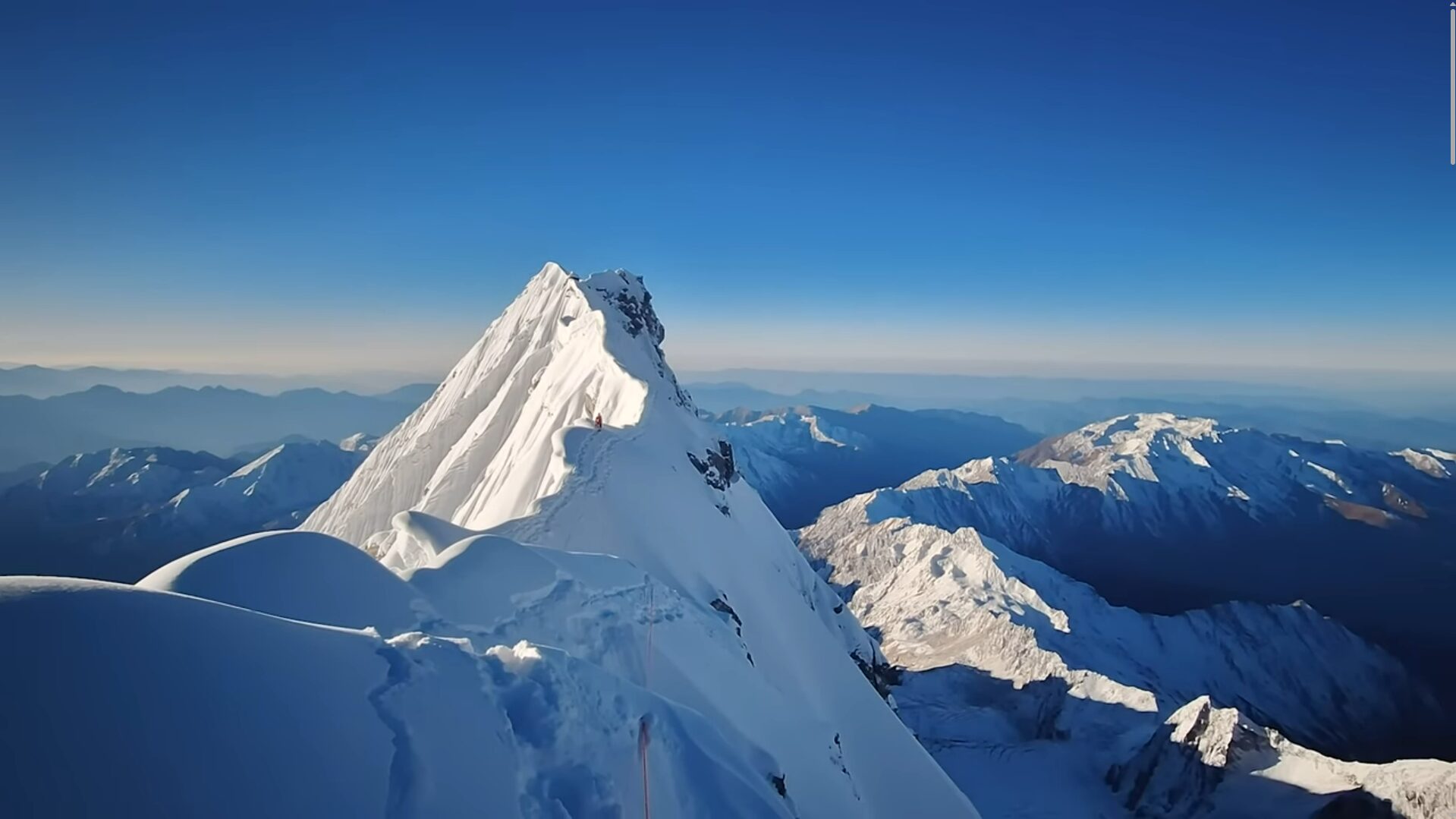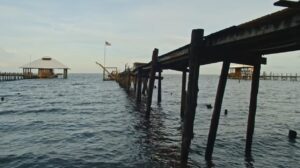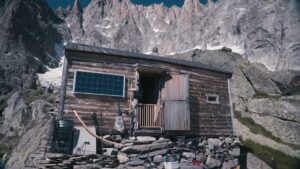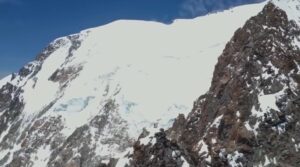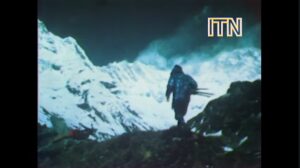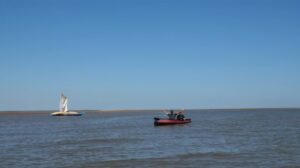Salimor Khola is a remote valley in Api Himal, nestled between a steep gorge and several unclimbed 6,000m peaks. The ridges and valleys of far western Nepal are far less popular for tourists and mountaineers, a tantalizing lacuna for the latter-day explorer.
This recent documentary, Salimor Khola: A Climbing Expedition to an Unexplored Valley in the Himalaya, follows a team of four as they attempt to explore the valley and summit some of its unclimbed peaks.
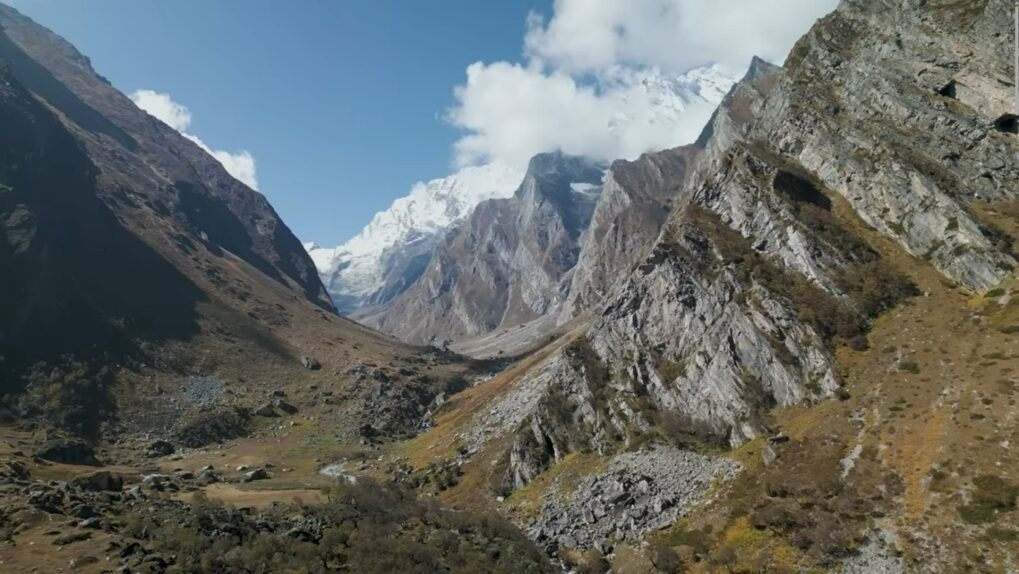
Salimor Khola valley. Photo: Screenshot
It takes over a week of travel — first flying, then driving, finally trekking– to reach the area. On the way, we meet the team– Matt Glenn, Hamish Frost, Paul Ramsden, and Tim Miller — all experienced mountaineers from the United Kingdom. The area is rural and remote; the people they do meet are surprised to encounter a Western climbing expedition.
The expedition is the brainchild of five-time Piolet d’Or winner Paul Ramsden, a sturdy Yorkshire man in his mid-50s. Ramsden had warned the younger alpinists that there might not be any climbing at all on their climbing expedition. They were going in to explore, not even knowing if they could reach accessible routes. But there was only one way to find out.
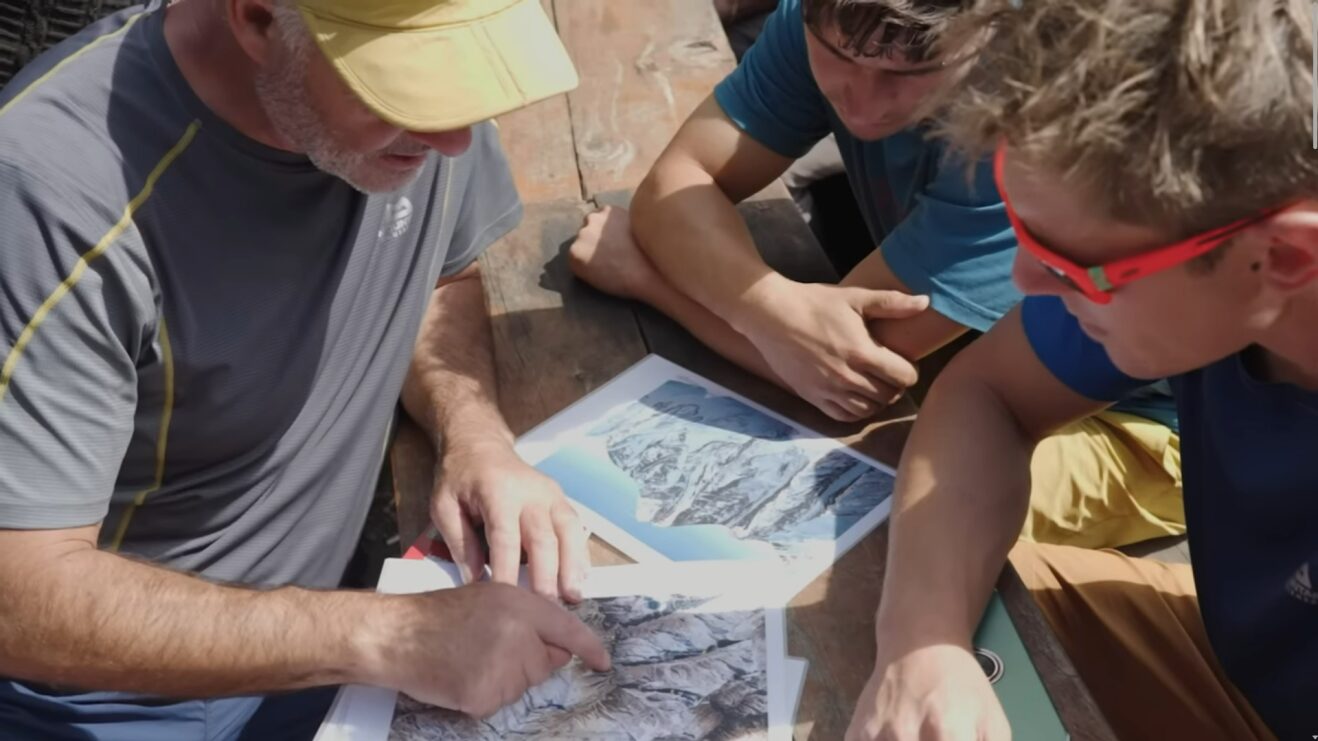
Paul Ramsden examines satellite photos with Matt Glenn and Hamish Frost during their trek in. Ramsden first set his sights on the valley after noticing it on Google Earth. Photo: Screenshot
They manage to find a route into Salimor Khola, so with a week of food, the expedition splits into two teams: Paul and Tim, and Matt and Hamish. Taking the time to explore also allows them to acclimatize.
The summit that wasn’t
After the reconnoitering and acclimatizing, Matt and Hamish set their sights on an unclimbed 6,000’er. After a hard day and 800 vertical meters gained, they bivouac on a ledge cut from snow.
They wake up to snow pressing on all sides, crushing and burying them. The footage goes black, but we hear them swear and pant as they struggle to free themselves and the tent. Eventually, with a half-broken tent and an exhausting night, they try to push on.
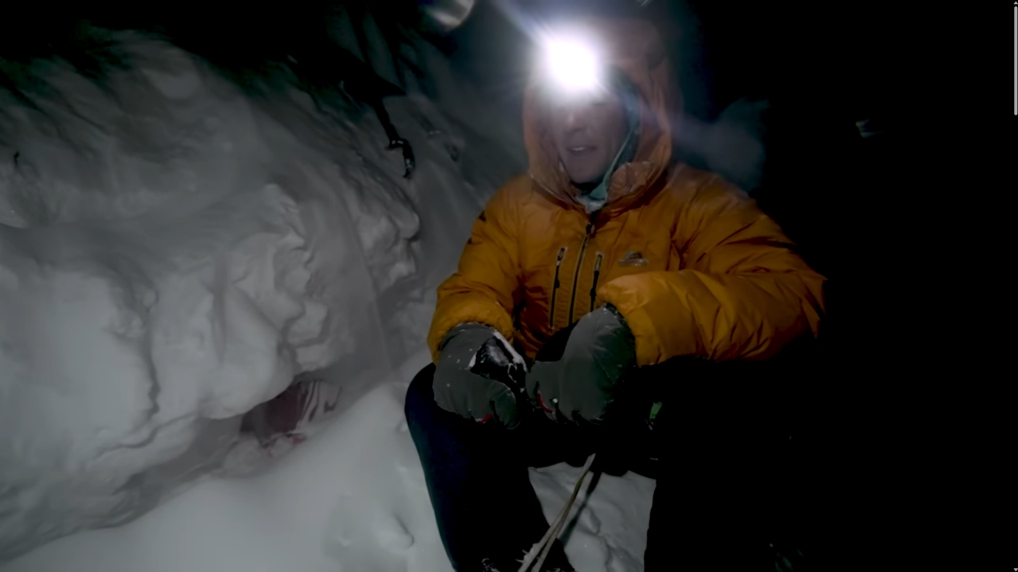
The tent was buried in snow, its poles broken, their belongings still inside. Photo: Screenshot
But they meet with impassable rock faces and are forced to turn back to base camp. After a day of rest, they head for a second peak — but exhaustion and heavy snow follow them. The next day, they meet a false summit and a series of avalanche near-misses. But they push on.
Only a few hundred meters from the summit, they stop. The rest of the way is heavily corniced, and another avalanche has just missed them. It’s time to turn around.
“There’s just something really beautiful about doing this…and then not being able to do the thing that you wanted to do and just having to do it for the sake of it,” Glenn observes.
Back at base camp, the pair reunites with Ramsden and Miller. They’ve made the first ascent 6,605m Surma-Sarovar, although Ramsden’s finger is frostbitten.
The film stays with Glenn and Frost at the end of their expedition. They didn’t get a summit, but they did do what Glenn calls a “proper expedition” — an adventure.
“I would love to do more of that,” Glenn says. “But maybe just not yet.”
